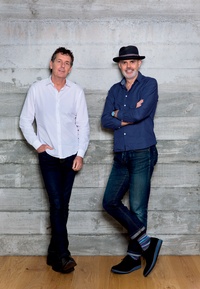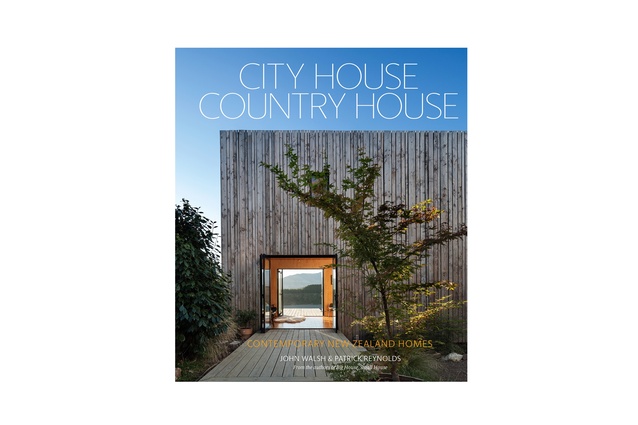Domestic arrivals
Writer John Walsh and photographer Patrick Reynolds talk about their latest book and the future of housing.
Your 2007 book (New New Zealand Houses) was published right before the global financial crisis. This one is also at an interesting crossroad because of our need for higher density. If you had to crystal ball for your next title, what would you love to see there?

Patrick Reynolds (PR): More multi-unit housing… it will also be interesting to see how much architecture emerges and is put into those buildings in the future. Obviously they’re developer driven, but will the market demand more sophisticated responses? Will architectural quality be able to move down the economic scale? Those are probably the most important questions.
John Walsh (JW): In addition, there are people starting to do things differently. There’s a small practice in this book called Makers of Architecture – that’s the project on the cover, a little project in Governor’s Bay in Christchurch, which has quite a lot of prefabrication and they actually went out and built a factory for that. So not only were they keen to design very efficiently and affordably but they also realised: ‘OK, what’s the next step in the process before that? We can’t find any of this stuff, we’ll have to start doing it ourselves…’ That’s interesting, too.
Have you noticed any modern-day vernacular? Are there any iconic voices from New Zealand that are being repeated or reinterpreted?
PR: The first answer is yes and the second one is no, in the sense that all architects everywhere are keenly involved with what surrounds them and what practice is going on elsewhere. There’s a lot of interplay that isn’t just hermetically sealed within a nation. There are some characteristics; obviously lightweight timber construction is a theme. The landscape is specific and there are architectural responses to that… There are themes that consistently come through.
Then, if we talk of culture… Kiwi [urban] culture is in a stage of rapid change, so we’re seeing it shift a little bit away from ‘beach, bach, barbecue’ to a more intensive and interesting and maybe more interiorised but also social life. Dwellings don’t need to be encompassing the entire machinery of life because much of that life, including eating, will be happening in the public realm.
What’s happening in the countryside – how was it uncovering that part of the country?
JW: Well, it [was] quite difficult. For a start, you’ve got half the architects in New Zealand based in Northland and then you get pockets of architecture around the country like Wellington, Nelson or Queenstown and some striking stuff is starting to happen in Canterbury. But large swathes of provincial New Zealand it is often quite difficult to find projects.
So… why houses? Why is that topic important?
PR: People who employ a really good architect – and of course architecture requires a good client as well as a good designer – are engaging in cultural production themselves. They are in a sense wanting to get into that discourse – I think this is why they open their doors to us. Because, in my view, a building isn’t finished until it’s been photographed and published.
City House Country House (Godwit), $85. For a closer look at one of the homes in the book, see here.










